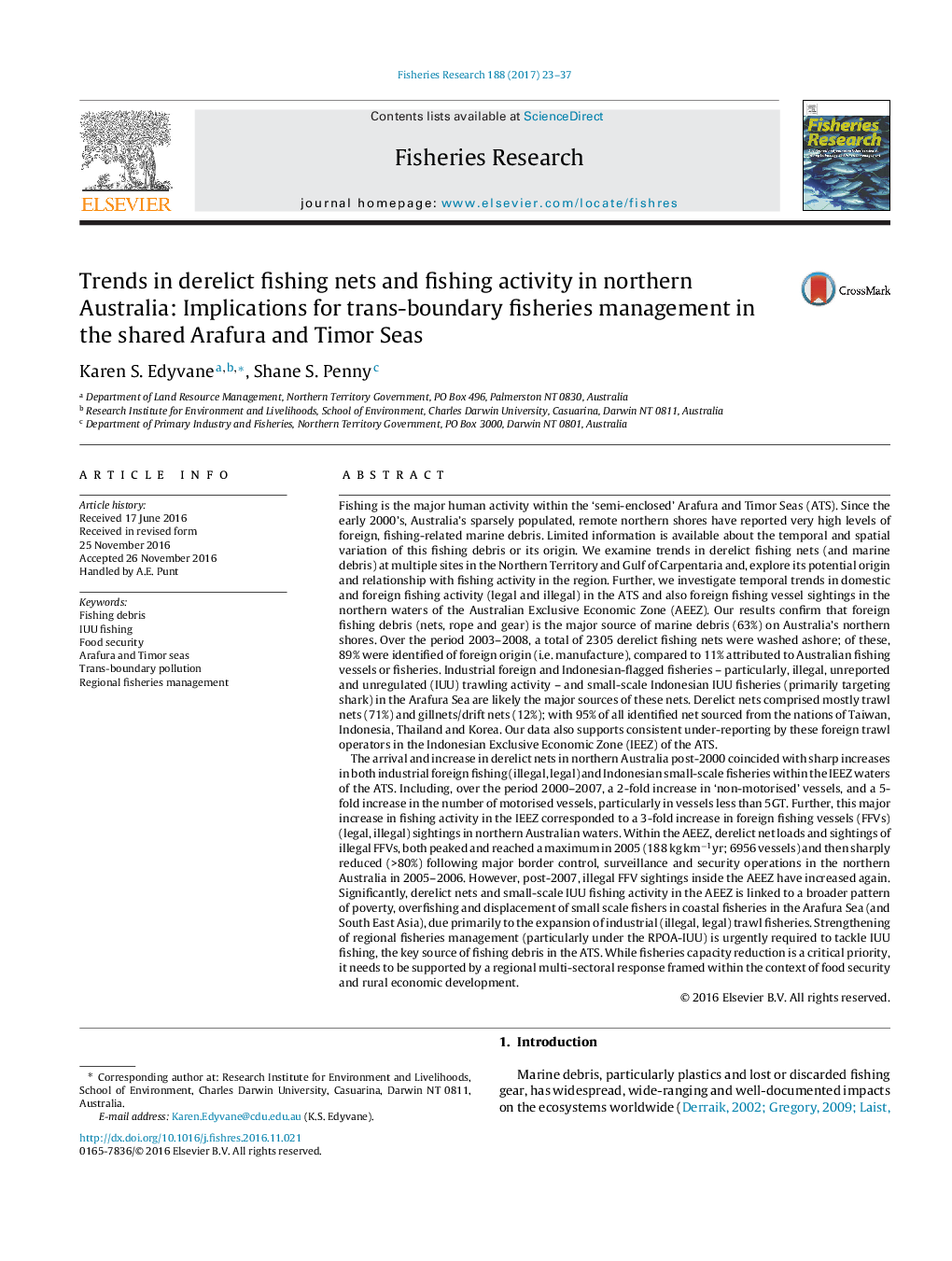| Article ID | Journal | Published Year | Pages | File Type |
|---|---|---|---|---|
| 5765590 | Fisheries Research | 2017 | 15 Pages |
Abstract
The arrival and increase in derelict nets in northern Australia post-2000 coincided with sharp increases in both industrial foreign fishing (illegal, legal) and Indonesian small-scale fisheries within the IEEZ waters of the ATS. Including, over the period 2000-2007, a 2-fold increase in 'non-motorised' vessels, and a 5-fold increase in the number of motorised vessels, particularly in vessels less than 5GT. Further, this major increase in fishing activity in the IEEZ corresponded to a 3-fold increase in foreign fishing vessels (FFVs) (legal, illegal) sightings in northern Australian waters. Within the AEEZ, derelict net loads and sightings of illegal FFVs, both peaked and reached a maximum in 2005 (188 kg kmâ1yr; 6956 vessels) and then sharply reduced (>80%) following major border control, surveillance and security operations in the northern Australia in 2005-2006. However, post-2007, illegal FFV sightings inside the AEEZ have increased again. Significantly, derelict nets and small-scale IUU fishing activity in the AEEZ is linked to a broader pattern of poverty, overfishing and displacement of small scale fishers in coastal fisheries in the Arafura Sea (and South East Asia), due primarily to the expansion of industrial (illegal, legal) trawl fisheries. Strengthening of regional fisheries management (particularly under the RPOA-IUU) is urgently required to tackle IUU fishing, the key source of fishing debris in the ATS. While fisheries capacity reduction is a critical priority, it needs to be supported by a regional multi-sectoral response framed within the context of food security and rural economic development.
Keywords
Related Topics
Life Sciences
Agricultural and Biological Sciences
Aquatic Science
Authors
Karen S. Edyvane, Shane S. Penny,
